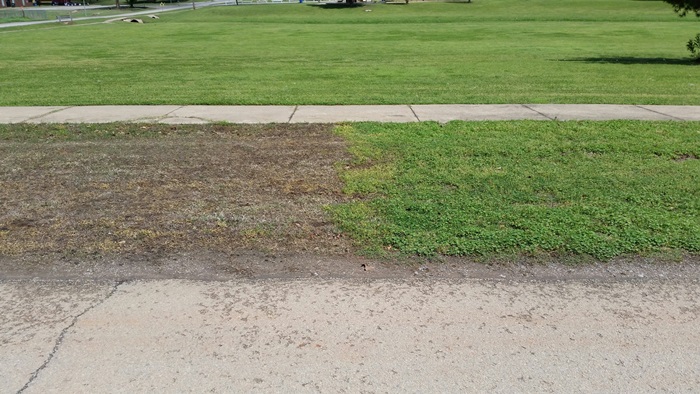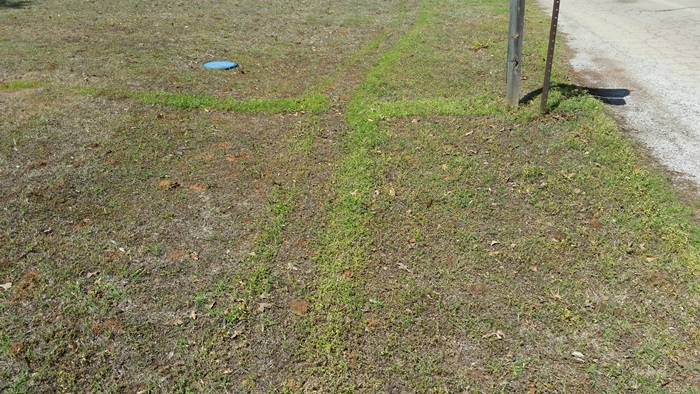One last look at winter weed control. Mow, mow, mow.
Categories: Lawn Care Pesticide and fertilizer application Weeds
I ran across this nice example of the value of winter weed control while out and about this last weekend. I’ll just let the pictures do the talking.
If you just glance at the picture above, you might easily think that the problem was in the lower left of the scene. Not so. Everything green is actually winter weeds. The brown area is bermudagrass just breaking dormancy. As you can clearly see, the difference in the two areas is quite remarkable. If spring weeds (and lots and lots of mowing) are not something you enjoy, mark your calendar NOW to spray for these weeds late next winter, say mid February. At that time of year, they are easily controlled and the chances of causing off-target damage is virtually nill.
Folks out spraying these weeds now are challenged not only by the maturing weeds ( harder to control), but also by the tender turfgrass which can easily be damaged if the rate is not exactly right. They also face the very real prospect of damaging valuable landscape plantings or vegetable gardens due to the nature of the herbicides used to kill these weeds.
This second photo does a nice job of making two more points. Once again, the bright green plants are weeds (they don’t look that bad here because the area has just been mowed). The two vertical lines show a partially clogged nozzle that was creating an inconsistency in the spray pattern. The horizontal line represents a “start-stop” point created by the two posts. Adding marking dye to the tank mix is a very good way to help avoid these problems.
I’m more than happy to help guide you through the process of successfully controlling these weeds. As I’ve already mentioned, make yourself a note for early 2016 to follow-up if you need some guidance.


Leave a Reply